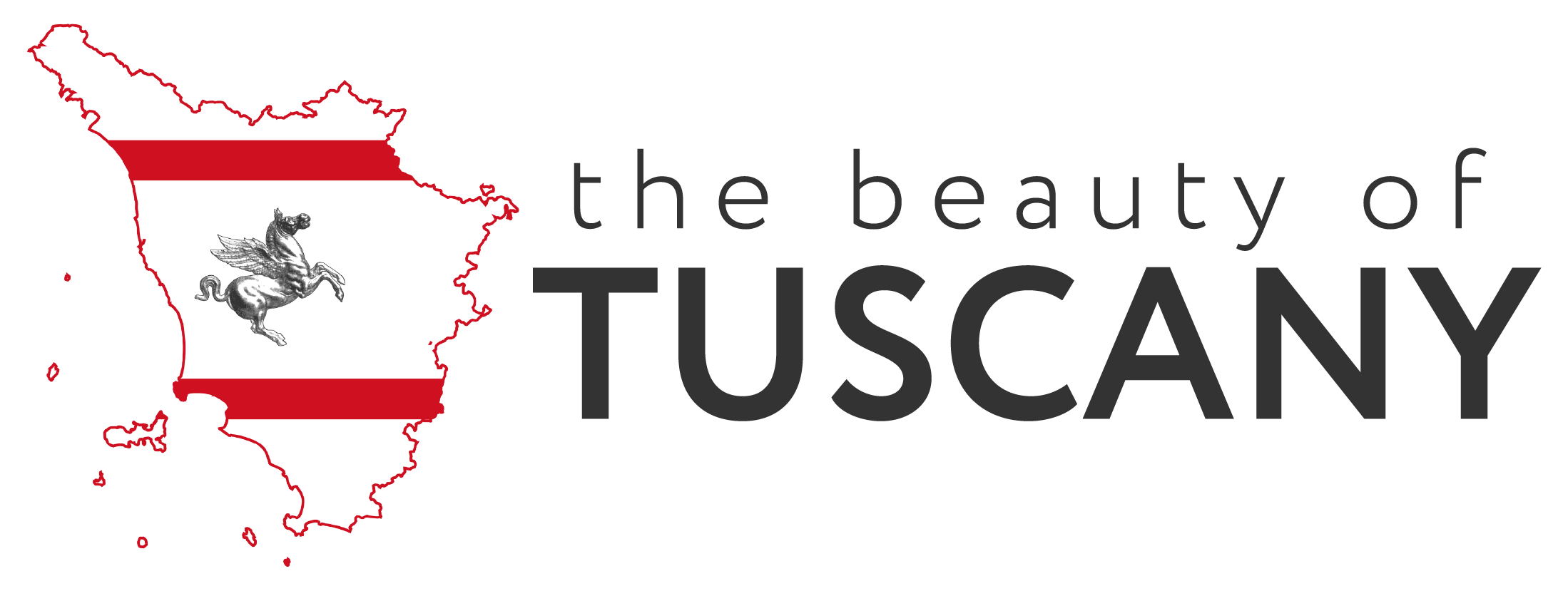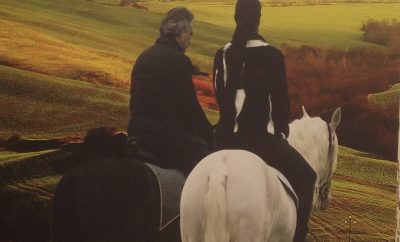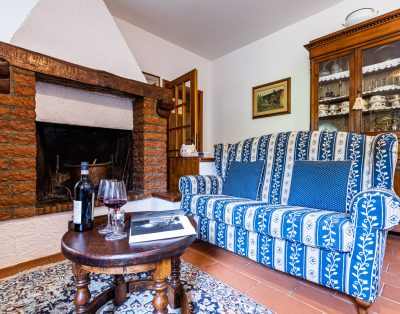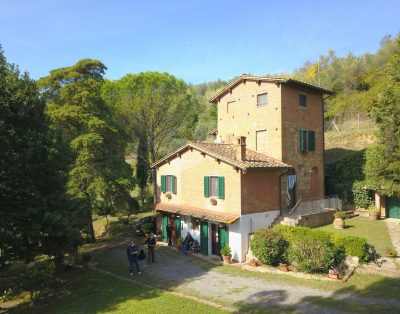Tuscany
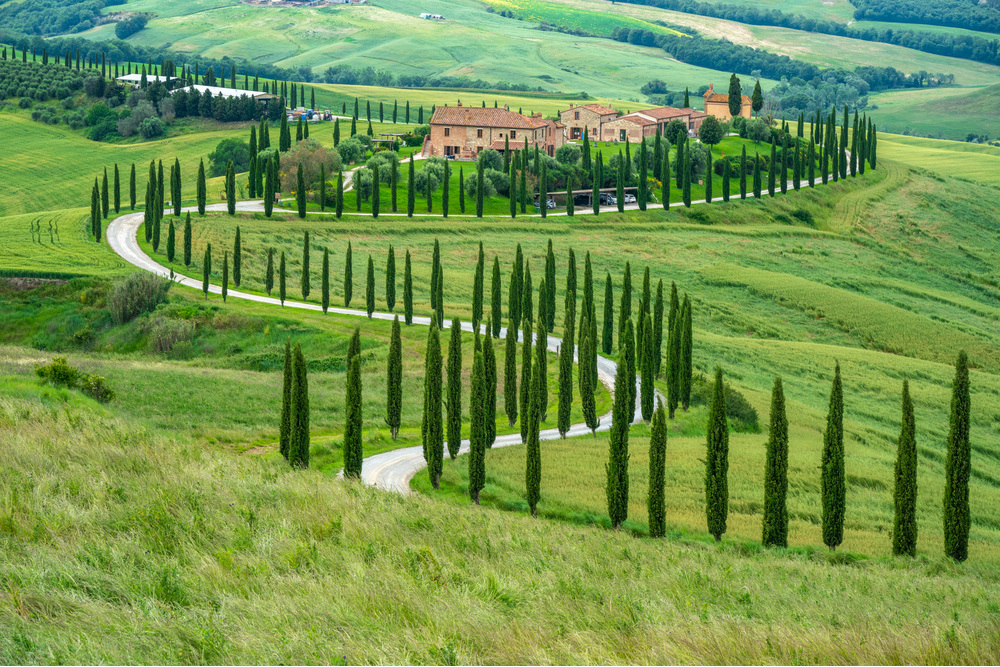
Tuscany is the most popular of the 20 Italian regions. It is located in the northern part of central-Italy. The region is diverse and a dream to experience all year round. Tuscany is the heart of Italy.
Tuscany has an area of approximately 23,000 km² and a population of a little less than 3.7 million. The roots of the Renaissance run deep in the region and are still visible in its wonderful heritage. Be charmed by the beautiful nature and its hundred-year-old castles and fortresses. The largest city is Florence and it is also the capital of Tuscany. The city is located in the northern part of the region.
Within a few kilometers, you will find several of the world’s most beautiful cities such as Lucca, San Gimignano, Florence, and Volterra, and it won’t take long before you are captivated by their beauty. Tuscany includes the provinces of Arezzo, Florence, Grosseto, Livorno, Lucca, Massa-Carrara, Pisa, Pistoia, Prato, and Siena.
While in Tuscany, you will experience exciting architecture and culture, beautiful surroundings, delicious dining experiences, vineyards, exclusive fashion, hospitable people, and last but not least, a love that flourishes here which creates unique peace of mind.
Tuscany produces great wines including Italy’s most famous red wine, Chianti, which got its name from a traditional region in Tuscany. They also have other fine red wines such as vino Nobile di Montepulciano, Morellino di Scansano, and Brunello di Montalcino. There are countless wineries that offer great food and wine tasting, nd they are never far from each other. You can either stay at the vineyards or go on day trips.
Surrounded and crossed by major mountain chains and with few (but fertile) plains, Tuscany has a relief that is dominated by hilly country, a narrow coastal line, and river valleys. The main valley is the Arno Valley, and Tuscany is bounded by the wooden Apennines to the north. Elba, a very famous island, along with some other small islands, belong to Tuscany. Elba has almost 150 kilometers (93 miles) of coastline with beaches hidden in secret coves and sand ranging from clear white to shades of gray or pink. It is just 10 km (6 miles) from the coast of Tuscany and is a green oasis dominated by Mount Capanne and the hills of Mount Calamita.
Beaches
The Tuscan coast line is roughly 300 km (186 miles) long and offers several beautiful beaches. The entire coast of Versilia is characterized by privately owned, wide, and sandy beaches. It is a child-friendly stretch with great opportunities to play in the shallow water. No matter where you are on this coastline, you’ll have a beautiful view of the mountain range in the background as you go for a swim. The most famous coastal towns in Tuscany are: Forte dei Marmi, Lido di Camaiore, Marina di Piatrasanta, Viareggio, Torre del Lago, and Marina di Pisa.
Forte dei Marmi is an exclusive coastal town with great designer stores and a vibrant nightlife. The evening atmosphere is usually very nice, as the shops are open late. While in Forte dei Marmi, you can combine swimming with a visit to one of Tuscany’s best street markets which offers quality clothes, leather goods and home items. The market takes place on Wednesday and Sunday mornings in the middle of the city. The beach areas with beach umbrellas and sun loungers in Forte dei Marmi are more expensive.
Lido di Camaiore is located between the two more famous towns of Forte dei Marmi and Viareggio. The city is known for its beautiful sandy beaches and is a popular destination during the summer. In addition to the 4 km (2.5 miles) of sandy beaches, the city also offers several shops, restaurants and pizzerias, as well as green public parks.
Pietrasanta’s coastal town, Marina di Pietrasanta, may not be as beautiful as its neighbor Forte dei Marmi, but the town offers dining, shopping, and a fantastic sandy beach. Marina di Pietrasanta is a pleasant, Italian coastal town where you will find everything you need for a nice holiday experience. If you want to combine hours in the sun with culture and nature, Marina di Pietrasanta is a great place to go for an eventful holiday.
Viareggio is a coastal town with a historic buzz, beautiful beaches, pine forests, fantastic shopping, vibrant nightlife, and food from the best depths of the culinary sea. Many of the beaches have swimming pools and playgrounds for kids. The city is also known for its big carnival in February and its beautiful Liberty buildings on the seafront. It is definitely worth seeing while taking a long afternoon walk. The shops are usually open all day until late at night.
If you prefer more rugged beaches and dunes, you should opt for the beaches south of Viareggio, at Torre del Lago. You can bring your own beach umbrellas and a packed lunch. Torre del Lago is located between Mar Tirreno and Lake Massaciuccoli, where Giacomo Puccini wrote some of his most famous operas and where a large Puccini opera festival is held every summer. You can also visit Puccini’s villa or take a bike ride in the San Rossore Natural Park, a child friendly park where you can seek some shade under the pine trees.
If you continue further south, you will reach the Marina di Pisa, which can be combined with a trip to the Leaning Tower of Pisa and Piazza dei Miracoli. It is approximately 11 km (7 miles) from the town to the beach. This is a child-friendly area with sandy beaches, promenades, restaurants, nightclubs, and an amusement park. Marina di Pisa is worth a visit on Sundays during the summer with its street market. Combine your visit with a trip in the inviting waters.
The town of Livorno, located about 40 minutes from Versilia, offers cliffs and crystal clear waters. Livorno is calmer than along the Versilia coast and has good snorkeling, diving, and surfing opportunities. It is a charming and varied coastline. The coastal towns south of Livorno are Quercianella, Castiglioncello and, Populonia. On this stretch it is worth seeing the city of Populonia, one of the most famous Etruscan fortress towns where the wall was built to protect its inhabitants from pirates. It is wonderfully situated on top of a ridge surrounded by the sea.
Spa and hot springs
Ever since the Roman times (and even before that), the people of Tuscany made use of the many natural hot springs in the region. Places like Saturnia gained popularity on Instagram, but there are more than 10 other such springs scattered across the region. The thermal waters of Saturnia are an enchanting and tempting stop as you explore Tuscany and the Maremma. Take advantage of free access to the hot springs called Cascate di Mulino, located less than 6 km (3.7 miles) outside the town of Saturnia and 3 km (1.9 miles) from Resort Terme di Saturnia. Saturnia’s thermal baths are the bubbling water that seeps through the earth’s crust in an area that extends from Mount Amiata to the hills of Albenga and Fiora and reaches Roselle and Talamone. The waters are rich in mineral deposits, especially sulfur which gives it a slight egg-like smell. The sulphurous spring waters, at a temperature of 37.5 °C, are well known for their therapeutic properties, offering relaxation and well-being through immersion. he waters attracted the locals, and they then constructed a well-maintained resort. In addition to the luxurious, exclusive wellness and spa centers of Saturnia, there are two free outdoor waterfalls, Cascate del Mulino and Cascate del Gorello.
Cascate del Mulino are probably the most famous natural springs in Tuscany. The waterfalls are made of several natural pools with warm thermal water, as well as a relaxing waterfall. They are open to the public and free throughout the year.
Saturnia and its hot springs are certainly another gem of the treasure that the Maremma offers, an area where wild nature and history blend perfectly, making Tuscany the perfect destination for your holiday in Italy!
Bagni di San Filippo is an extremely beautiful hot spring, and Petriolo is also quite popular. Bagno Vignoni is perhaps the most historic place, but personally I would just choose one that is close to where you are staying.
Cinque Terre
The five idyllic fishing villages Cinque Terre are worth a visit. They are located in the Liguria region, but we choose to mention them as it is a short distance from Pisa and several other cities in Tuscany. Many people choose to go on a day trip as it is easy to get there by train. Cinque Terre consists of five very beautiful, vibrantly colored villages perched on the cliffs overlooking the sea. The Cinque Terre is a national park with an unlimited territory and a unique history. The territory hides a thousand-year-old secret: human activity of growing vines that changed the nature. In the villages, the narrow streets with the old architecture, the many churches, and the view of the picturesque harbor are incredibly beautiful. The villages are built over mountain terraces and there is very little sign of modern development. Trails, trains, and boats connect the villages, and cars cannot reach them from outside.
Teatro del Silenzio
Another attraction that is recommended, especially if you like the tenor Andrea Bocelli, is to go to a concert in his hometown Lajatico. The concert is in the open air in the beautiful Tuscan nature. The concert is in the open air in the beautiful Tuscan nature. Every year during the summer, Andrea performs at the amphitheater Teatro del Silenzio in his hometown in front of an audience from all parts of the world. It is a unique moment and an unforgettable experience. For more information, check out Lajatico on the list of cities we recommend visiting.
Shopping
There are many reasons to visit Tuscany, and shopping is definitely one of them. From bags, shoes, and jewelry, to terracotta vases and hand-decorated ceramics, there is no shortage of ways to spend your money here. Read the introduction to the best places to go shopping to in Tuscany, and get your wallet ready!
For fashion lovers, the Tuscan outlets are a must-see: The Mall near Florence is the absolute highlight if you are looking for luxurious brands, with Prada and Gucci stealing the show, or the Barberino Designer Outlet with an eye-catching selection of 200 stores.
If you have more money than sense, via de´ Tornabuoni in Florence is the Renaissance’s answer to New York’s 5th Avenue. In this elegant street, Bulgari, Christian Dior, Fendi, Gucci, Prada, Ferragamo, and Tiffany compete for your attention and your money.
Florence is definitely the top destination for shoppers. You can easily spend a week in the city visiting the wonderful shops and markets. But shopping in Tuscany doesn’t have to drain your wallet. Porcellino Market and San Lorenzo Market offer more budget friendly alternatives, where you can find everything from keychains to leather jackets, belts or bags and cheap and cheerful T-shirts. If you go to Borgo San Lorenzo street you will find a good concentration of affordable shoe stores.
Siena is another great place to go shopping in Tuscany. It has a good selection of Italian brands, clothing stores, and many places where you can buy ceramics, souvenirs, and food specialties. One of these places is Pasticceria Nannini where you will find the typical Sienese goodies, ricciarelli and panforte.
If you are in Lucca, you can check out the stores along Via Fillungo and the surrounding areas.
Typical and traditional cuisine
The landscape of Tuscany is beautiful, lush, and colorful. The soils have given the ingredients that have made Tuscan cuisine world famous and loved all over the planet. Traditional Tuscan cuisine harmonizes two inseparable principles – simplicity and quality. Tuscan cuisine is based on the so-called cucina povera, the peasant traditions that arose out of necessity during difficult times. Even now, Tuscans prefer to stay close to their roots with natural local experiences, taking their time to find the best quality meat and ingredients even if it means going to a different store for each ingredient. They are proud to know where their food comes from and believe in eating seasonally. In fact, one of the specialties below is only available for a few weeks each year!
Florentine Steak, Bistecca Alla Fiorentina, is a T-bone steak that is served very rare, or al sangue True to the Tuscan tradition of simplicity, it is usually enjoyed with just a little olive oil and salt to let the natural taste steel the spotlight.
Trippa and Lampredotto are good examples of the tradition of cucina povera in Tuscan cuisine. During tough times, it was impossible to have a Bistecca alla Fiorentina on the table every day, so farmers learned to use every part of their animals. Trippa (or Tripe) is edible lining from the cow’s stomach, and Lampredotto is the cow’s fourth stomach. Lampredotto is especially known as a Florentine street food specialty!
Castagnaccio is a traditional Tuscan dessert made with chestnut flour, raisins and pine nuts, spiced with a little bit of salt, olive oil, and rosemary. The ingredients are mixed with water and baked to make a thin, dense cake. You can eat it hot or cold, and it pairs perfectly with a sweet Tuscan dessert wine!
Schiacciata all’Uva is only available for a few weeks during the year from mid-September to early October during the grape harvest. Sweet Canaiolo grapes are used to make Schiacciata, a tasty flatbread, into a sweet doughy specialty.
Ribollita literally means “re-boiled” and was traditionally made by boiling remnants of minestrone. It’s a hearty, filling soup made with black cabbage and other seasonal vegetables, beans, and stale bread (a good Tuscan chef wastes nothing!) and is usually enjoyed in the winter.
Pappa al Pomodoro is another thick bread-based soup, cooked with tomatoes and basil, amongst other seasonal vegetables. It is often served as another hot dish, but since it can also be served at room temperature or chilled, it is a popular choice for buffets and appetizers!
Since Tuscan bread becomes stale in just a few days, Panzanella is another way to make use of it, this time as a salad! The bread is soaked in water and vinegar, pressed dry and mixed with freshly chopped cucumber, onion, tomato, and basil. It is perfect for summer as it does not need cooking and is served refreshingly chilled.
Not quite cucina povera, but still, Truffles are a specialty in Tuscany, and are much more obtainable than they are in other parts of the world. Truffles cannot be grown, so they must be harvested from the forest with the help of a dog or pig to sniff them out. Truffles can be saved and used all year round, but October and November provide the perfect truffle-friendly climate, making them a traditional autumn ingredient. They are perfect with fresh handmade Pappardelle, and if you are in Tuscany during the last three weekends of November, do not miss the White Truffle Festival in San Miniato!
Crostini di Fegato are slices of hot bread topped with chicken liver pate. The food is typically prepared with butter, anchovies, capers, onions, and broth, and is served with crostini as an appetizer or snack.
Coccoli, salty fried dough balls, are an important Tuscan comfort food – the name literally translates to coziness! Who would not want to wrap themselves in the warm embrace of fried dough? They are often eaten as an appetizer and served with Prosciutto and Stracchino, a fresh soft cheese.
Tuscan cuisine is probably the best food in Italy (or maybe in the world!).
It can be nice to know that most restaurants do not open until 20:00. 8:00 p.m.. In Italy it is not common to tip your waiter as the tip is usually included in your bill. Leaving a tip can actually be insulting.
Climate and weather
The region has a Mediterranean climate, but the climate varies with the seasons. April marks the start of the spring in Tuscany, as it starts to sprout everywhere and it smells delicious. Summer is hot and dry, while winter is mild. The average annual temperature is around 20°C (68°F). There are more than 200 days of no precipitation every year.
The coast and valleys tend to have warmer summers than the hills and mountains, although the coast benefits from breezes from the sea for cooler temperatures, even during the warmer months.
Considering the weather, we would say that Tuscany’s best travel months are April, May, June, September and October. These months combine the convenience of peak season with pleasant weather. They have sunny days, with some rainy days as well.
The fall climate is pleasant. The summer temperatures stay until mid-fall, and you will see people taking a swim until late October. The lush green areas change to lighter colors and there are sunny days until October. The fall is peak season for music and food festivals, operas, and theaters. Most local stores close in August, as the Italians themselves go on holiday, but they reopen when fall approaches. Although the days are shorter and the darkness settles faster than during the summer, there are even more fantastic opportunities to enjoy the cities during the fall.
Most people visit Tuscany in the summer or in the spring and fall, but that does not mean that winter is a bad time to visit. Because of the smaller crowds, winters are ideal to visit museums and churches in peace and quiet. Winter offers many sunny and mild days, but the nights are cold, especially in hilly areas. Wear several layers of clothing, and be prepared for shifting temperatures between daytime and evening.
The coolest months are January and February, with January being the coldest. Temperatures tend to be approximately 7°C (45°F) along the coast and ranging from 3.5°C to 5.5°C (38°F to 42°F) inland. The temperatures in the mountains are much cooler, and the snowfall attracts skiers, making it perfect for a winter holiday in the slopes!
Tuscany is beautiful all year round whatever the season.
Transport and accessibility
Getting to and from the various places in Tuscany is easy. There are taxis in all the cities, they cannot be stopped on the street, but can be found at designated taxi stops. There are buses and trains between the cities, and you can also rent a car. In addition, it has fantastic opportunities for great trips both by bike and on foot, by the sea and in the mountains.
We offer selected houses, holiday homes, holiday apartments, and villas in Tuscany. We use our local network to find attractive holiday homes and check out all the places in person.
Contact us for personal guidance or to find a holiday apartment, holiday house, or villa on this page. We work and live in Lajatico in Tuscany and know the areas very well. We warmly welcome you all.
We have made a guide to what we think you should see and experience while you are in Tuscany. You will find an overview of our services in the menu at the top of the website. Get in touch if you want a fantastic experience and holiday in Tuscany.

